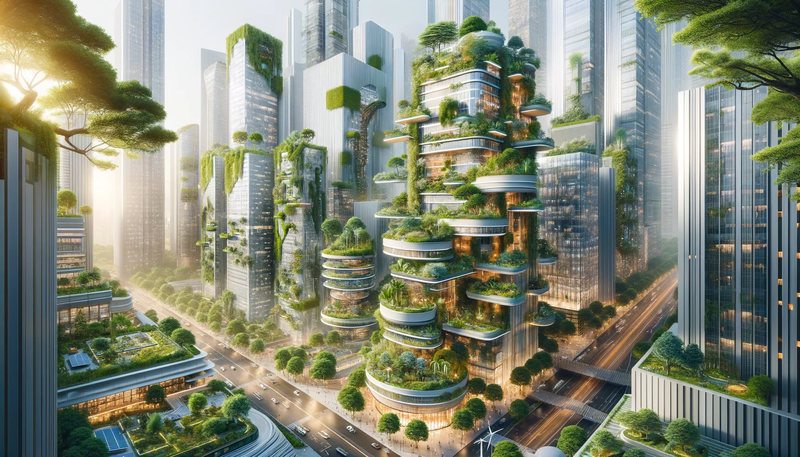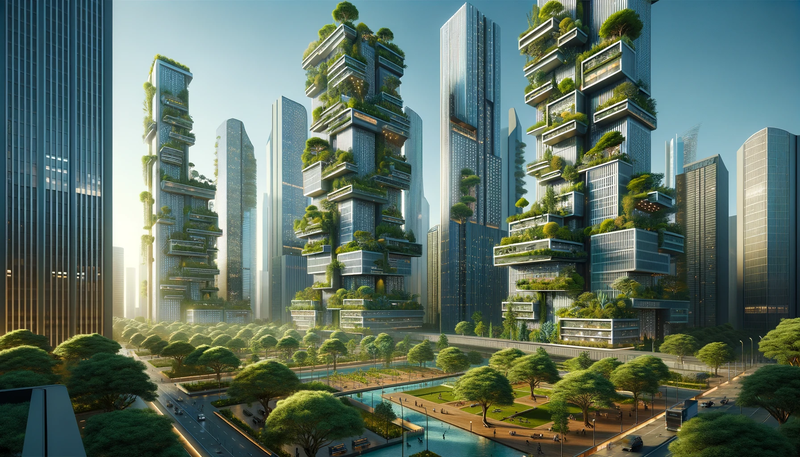Designing Greener Urban Futures: The Intersection of Biophilic Urbanism and 3D Rendering
In recent years, the architectural and urban planning landscapes have been experiencing a significant paradigm shift, marked by an increasing focus on sustainability and human well-being. At the heart of this shift is the concept of biophilic urbanism, an approach that seeks to integrate natural elements into urban design. This approach, when combined with the advanced capabilities of 3D rendering, is creating new possibilities for designing greener, more sustainable urban futures.
Understanding Biophilic Urbanism
Biophilic urbanism is based on the principle of biophilia, which suggests that humans have an inherent affinity towards nature. This concept has been translated into urban design by integrating natural elements such as plants, water bodies, natural light, and other living systems into the urban fabric. The goal is to create urban spaces that not only serve functional purposes but also promote the well-being of residents by fostering a deeper connection with nature.
The Emergence of 3D Rendering in Urban Design

3D rendering has emerged as a transformative tool in architectural and urban planning. It enables architects and planners to create detailed, accurate, and lifelike visual representations of their projects. In the realm of biophilic urbanism, 3D rendering allows for the detailed visualization of how natural elements can be seamlessly woven into urban landscapes, providing a tangible glimpse into proposed designs and ideas.
Visualizing Greener Urban Spaces
One of the primary advantages of using 3D rendering in biophilic urban design is the ability to visualize green urban spaces in a realistic and detailed manner. Architects and urban planners can create virtual models that incorporate green roofs, vertical gardens, urban parks, and green corridors. These visualizations not only inspire but also demonstrate the practicality and benefits of integrating nature into urban environments.
Enhancing the Design Process
Integrating 3D rendering with biophilic urban design enhances the design process, allowing for the exploration of how natural elements can be incorporated into various urban settings. This approach enables designers to examine factors like sunlight, shading, and the impact of green spaces on the overall urban landscape. Such detailed planning ensures that the integration of natural elements is both aesthetically pleasing and functionally viable.
Facilitating Stakeholder Engagement
Effective communication is vital in urban planning, and 3D renderings of biophilic designs enable clearer communication with stakeholders, including government officials, investors, and the community. Realistic visualizations of proposed projects help in building consensus and support for biophilic initiatives, ensuring that all parties are on the same page regarding the project's vision and goals.
Addressing Environmental and Social Challenges
Biophilic urban design, visualized through 3D rendering, addresses several environmental and social challenges faced by modern cities. Incorporating natural elements into urban design can significantly contribute to reducing the urban heat island effect, improving air quality, and enhancing biodiversity. Additionally, these designs offer social benefits by providing residents with access to serene and healthy natural spaces within the urban jungle.
Promoting Sustainability and Resilience

The combination of 3D rendering and biophilic urbanism plays a crucial role in promoting sustainable and resilient urban development. By visualizing effective implementations of green spaces, energy-efficient buildings, and sustainable water management systems, planners and architects can create models for future urban development that are environmentally sound and resilient to climate change.
Overcoming Urban Design Challenges
Urban design comes with its own set of challenges, including spatial constraints, regulatory compliance, and budget limitations. 3D rendering helps overcome these challenges by allowing designers to experiment with different biophilic elements and their configurations within the constraints of urban spaces. It also aids in identifying potential design issues early in the process, thereby saving time and resources.
A Catalyst for Urban Innovation
The use of 3D rendering in biophilic urbanism acts as a catalyst for innovation in urban design. It opens up possibilities for creative solutions in integrating nature into urban spaces. From rooftop gardens and nature-infused plazas to innovative green infrastructure, 3D renderings help push the boundaries of traditional urban design.
Preparing for the Future
As urban populations continue to grow, the need for sustainable, healthy, and livable cities becomes more pressing. The fusion of 3D rendering technology with biophilic urbanism prepares us for this future, offering a blueprint for creating urban spaces that are in harmony with nature. It paves the way for a new era of urban development, where cities are not just habitable spaces but thriving ecosystems that benefit both humans and the environment.
Our Services
View some of our most popular services below.











